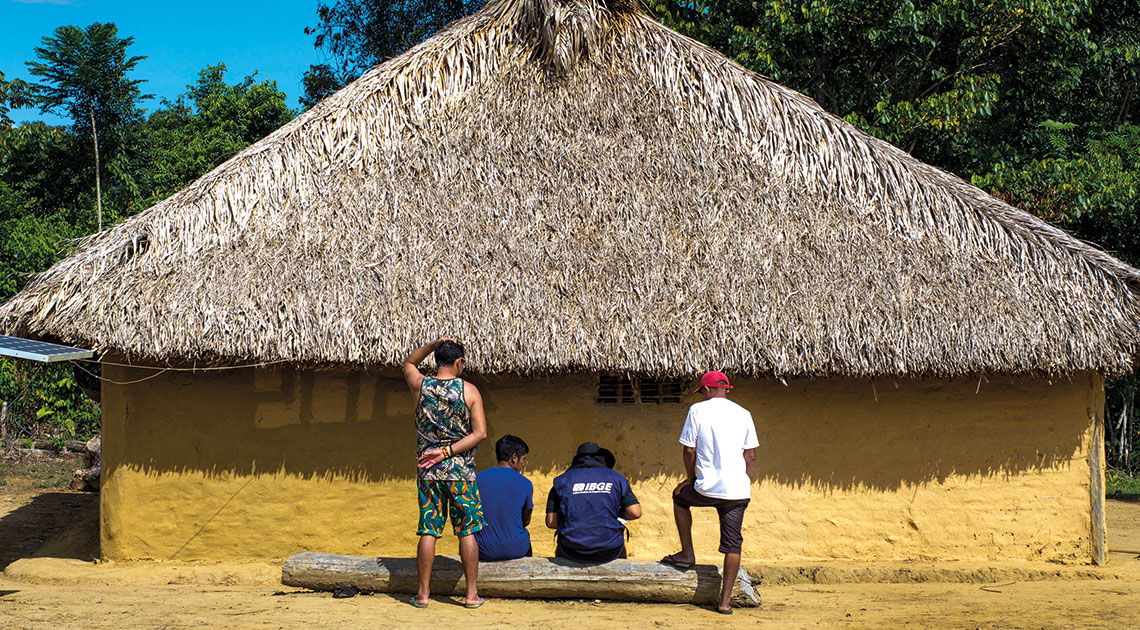In the announcement of the results of the 2022 Demographic Census, which is occurring as the data is tabulated, the count of a historically less favored portion of the population has attracted the attention of the experts. “Until the mid-nineteenth century, the extinction of Indigenous peoples was seen as certain in Brazil, but we are experiencing the opposite movement: a process of renaissance,” says historian Edson Kayapó, of the Federal Institute of Bahia and who belongs to the Kayapó Indigenous peoples, about the information published by the Brazilian Institute of Geography and Statistics (IBGE) in August. Changes to the methodology and technological support used in the data collection process, as well as the increased number of people who self-declared as Indigenous, puts the number of residents in the country who identify with some ethnicity 88.82% higher last year, compared with the 2010 Census. In total, there were 1,693,535 Indigenous individuals living in Brazil in 2022, which represents 0.83% of the country’s population. In 2010 the number was 896,917, or 0.43% of the total residents.
For Kayapó, the increase proves that, even with the difficulties related to the demarcation of territories and the offer of differentiated Indigenous education in communities, these peoples have managed to strengthen traditions, languages, and cosmologies. In the historian’s view, the appreciation of Indigenous identities gained force between the 1970s and 1980s — the promulgation of the Federal Constitution of 1988 was a milestone for this process. Among other measures, the Constitution established that Indigenous peoples have ownership rights over traditionally occupied lands. “The advance in gaining rights has motivated the strengthening of identities in recent decades,” analyzes the historian. “Nowadays, in Brazil, people feel more encouraged to say they belong to a specific people or ethnicity, even living outside of Indigenous lands.”
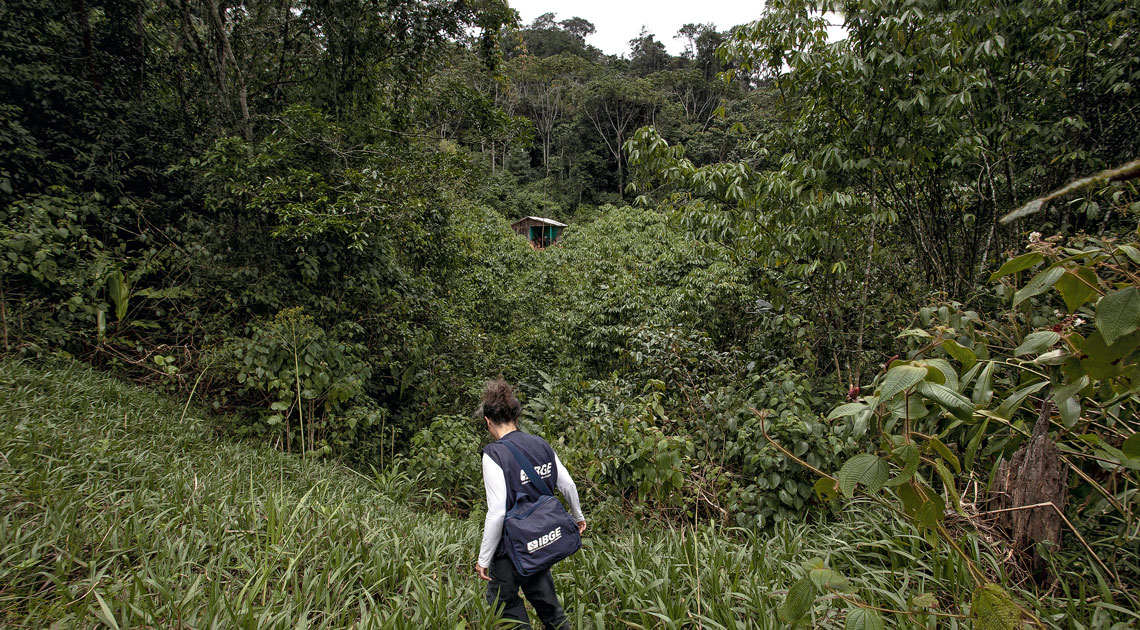
The Yanomami Indigenous Land does not have roads and many rivers are not navigable. Data collection had to be done using planes and helicopters, as well as walkingGuilherme Gnipper / Funai
According to anthropologist João Paulo Lima Barreto, of the Federal University of Amazonas (UFAM), it is currently not just leaders fighting for the rights of Indigenous peoples. The new generations are also involved, something that he finds surprising. “We are experiencing a turning point in self-esteem and returning to the feeling of belonging and of being Indigenous. It is an abrupt change in ontology and awareness. The rise in the Indigenous population will likely intensify in the coming years due to increased self-identification,” projects the researcher, known among his people, the Ye’pamahsã, as João Paulo Tukano.
The main change in the methodology that impacted the Indigenous population count involved the question “Do you consider yourself Indigenous?” In 2010, it was only asked to people who lived in lands demarcated by the Brazilian National Foundation of Indigenous Peoples (FUNAI). For this reason, the survey that year may have left out Indigenous peoples residing in cities or in nondemarcated regions. Last year, through partnerships with organizations and leaders, in addition to the collection of real-time satellite images, the IBGE carried out the prior mapping of areas where Indigenous occupations could exist outside the demarcated territories. And it applied the question “Do you consider yourself Indigenous?” to the residents of these locations.
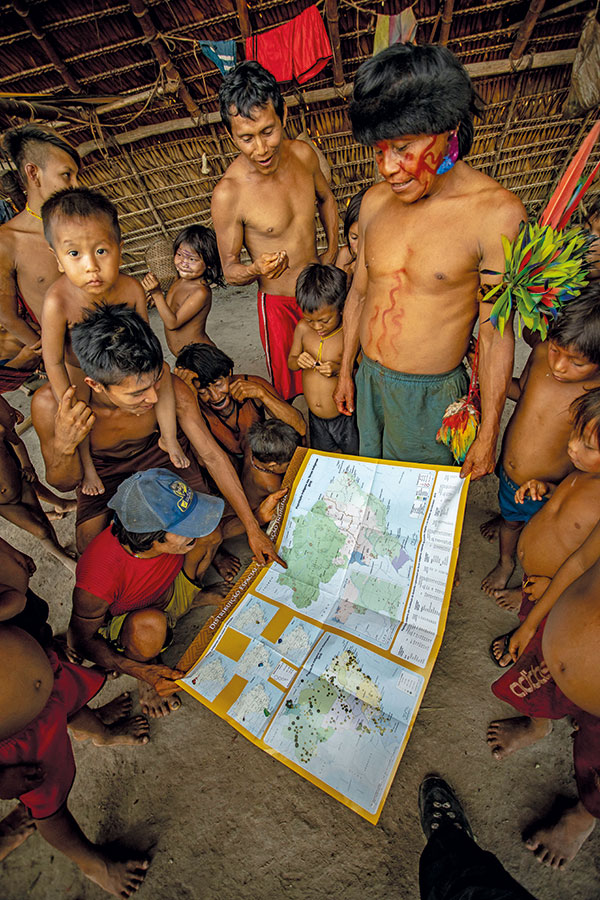
Operation in the Yanomami Indigenous Land allowed the collection of data from 16,800 indigenous people in communities in the territory of Roraima and 10,200 in villages in AmazonasGuilherme Gnipper / Funai
In relation to the methodological advances, anthropologist Leandro Mahalem de Lima recalls that in the General Census of 1872, the first conducted in Brazil, only descendants of Indigenous people were counted, and even then, in the category of caboclos (a Brazilian of mixed white and Indigenous or Black and Indigenous ancestry). “This ignored a population existent in wide geographic areas,” says the researcher associated to the Amerindian Studies Center of the University of São Paulo (USP). “In this case, the classification of the race or color Black was used to name African, Black, and Creole people. The name Creole categorized Black people born in Brazil and the term pardo was used to refer to the crossing of the African race with other races. The designation caboclo should be understood as Indigenous race or, furthermore, as the mixture between white and Indigenous people and was associated to a position of inferiority in the class system,” continues the anthropologist.
The following survey, in 1890, the first of the republican period, registered an increase of the caboclo population, counting around 1.3 million people, or 9.04% of the Brazilian population. In 1900, 1920, and 1970 the question “color or race” was not applied. In 1940, 1950, 1960, and 1980, the category caboclo was included in the pardo group, “diluting the specifics of the generic miscegenation group.” The category “Indigenous person resident in reservations,” was included in the 1960 Census, which counted 10,000 people, or 0.01% of the total population, with many areas left out of the count. The category Indigenous was only included in the question about color and race in the 1991 Census. “It was a milestone in the trajectory of the official statistics,” highlights the anthropologist. Mahalem de Lima further comments that the USA has also recorded an increase in its Indigenous population since 1960, when self-identification was included in the population count and specific public policies were created for different peoples. “The total rose from 550,000 Indigenous people, or 0.31% of the US population in 1960, to 9.6 million, which corresponds to 2.92% of the inhabitants in 2020.”
Beyond the strengthening of Indigenous identities and methodological changes, the population increase may be related to a dynamic of demographic recovery among Indigenous people. During the press release held on August 3, anthropologist Marta de Oliveira Antunes, of the IBGE, said that in order to know the role of the demographic component in this growth, it would be necessary to analyze data about fertility and mortality, as well as producing population pyramids. This information will be published by the institute in the coming months. However, despite it not yet being possible to estimate the role of the demographic component in the Indigenous population expansion in general, the Census identified an increase in the number of people living in Indigenous lands in all regions of the country.
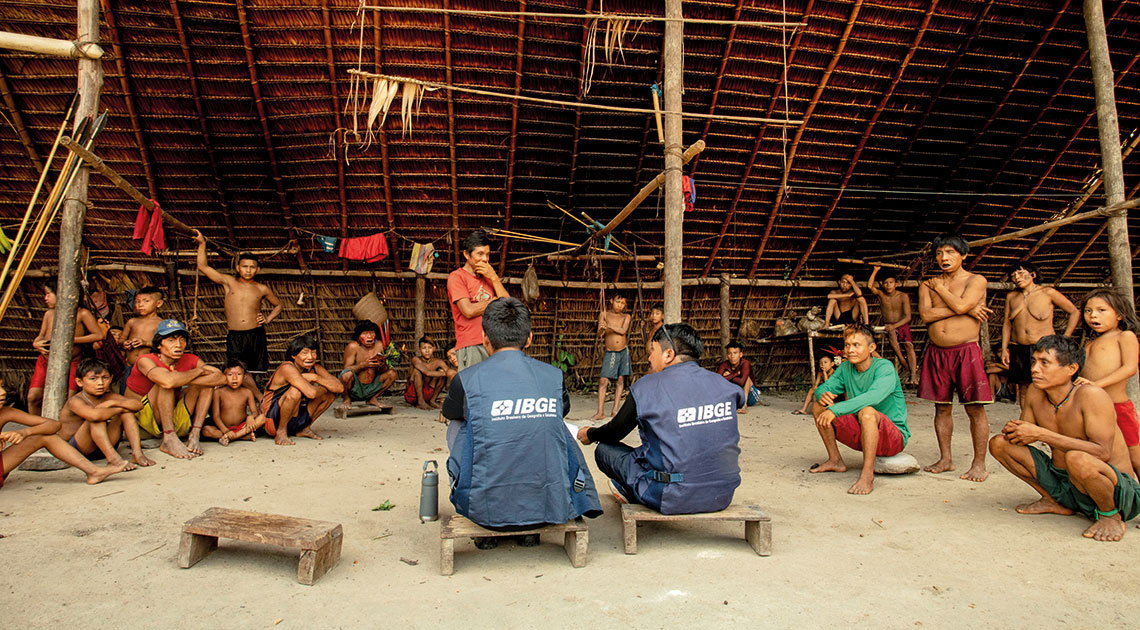
Data collection in the Yanomami Indigenous Land, carried out over 23 days, included the participation of local leaders and dialogue with communitiesGuilherme Gnipper / Funai
Antunes explained that the country counted 505 Indigenous lands in 2010. In 2022 this number rose to 573. As a result of changes in regularization processes, four of them were suppressed and 72 inserted into the FUNAI database. “This means that there are 501 Indigenous lands that can be compared between the 2010 and 2022 censuses,” clarifies the anthropologist. Over the course of this period, the Indigenous population resident in the group of these 501 lands rose from 511,600 to 593,500 people, an increase of 16.01%. “These data could be evidence that the Indigenous population is in a process of population recovery,” estimates anthropologist Artur Nobre Mendes, a FUNAI employee for four decades. In 2022, the Yanomami Indigenous Territory, in the states of Amazonas (AM) and Roraima (RR), registered the greatest number of Indigenous people (27,100), followed by Raposa Serra do Sol (RR), with 26,100, and Évare I (AM), with 20,100.
Furthermore, according to the survey, the three municipalities with the largest quantity of Indigenous people were also in Amazonas: Manaus (71,700), São Gabriel da Cachoeira (48,300), and Tabatinga (34,500). The cities with the largest proportions of Indigenous population were Uiramutã (RR), where 96.6% of the 13,200 habitants belong to some ethnicity, Santa Isabel do Rio Negro (AM), with 96.17%, and São Gabriel da Cachoeira (AM), with 93.17%. For Mendes, the 2022 Census brings immediate impacts for the formulators of public policies, especially in relation to Indigenous people that live in urban areas. “Historically, Indigenous policies in Brazil have been aimed at people living on Indigenous lands,” says the anthropologist from FUNAI. “Now, the Census data show the urgency of also creating actions for those who live in other areas, other than the demarcated ones.”
According to Mendes, one of the surprises of the 2022 Census was the population increase recorded in Bahia, which became the second state with the largest quantity of Indigenous people, totaling 229,100 people and behind only Amazonas (490,900). Mato Grosso do Sul (116,400), Pernambuco (106,600), and Roraima (97,300) come next. On the other hand, Sergipe (4,700), the Federal District (5,800), and Piauí (7,200) were the states with the lowest number of Indigenous people in 2022. Data from the survey show that 44.48% of the Indigenous population lived in the North region in 2022, totaling 753,300 people, while 31.22% were in the Northeast, which corresponds to 528,800 individuals. It was further found that 867,900 Indigenous people lived in the Legal Amazon — which covers nine states — last year, representing 51.25% of the total. This means that half of Brazil’s Indigenous population lives outside this region.
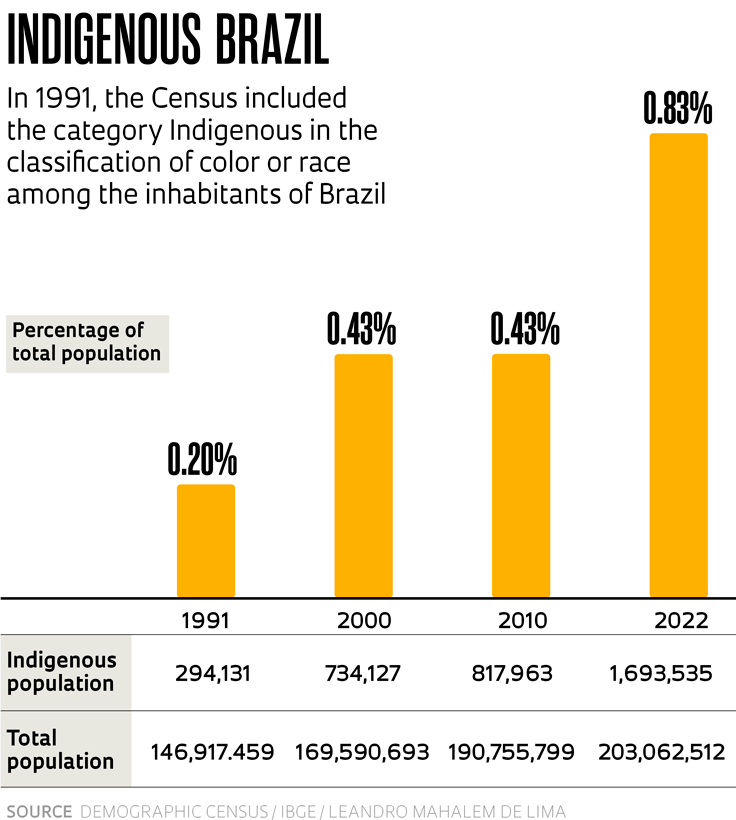
“In the Indigenous communities, each census taker had the support of at least one Indigenous person to carry out the data collection. In some cases, this team totaled five people, including professionals from the IBGE, guides, translators, and leaders,” said Antunes, from the IBGE, during the event in August. According to her, to reach all the locations, it was necessary to make crossings in boats, airplanes, and helicopters, in addition to the journeys by foot in the middle of dense forest. The anthropologist explains that, prior to entering into each group, inside or outside the Indigenous lands recognized by FUNAI, the census takers spoke with leaders to explain how the questionnaire works. Many of them, prior to authorizing the entry of the IBGE, asked to speak with the community itself. “The respect for these processes and the dialogs with local populations were fundamental so that the Census could reach all the Indigenous locations in the country,” she said. One piece of evidence of the effectiveness of the new methodology and the engagement of the Indigenous populations with the data collection process, according to the anthropologist, is the nonresponse rate recorded for the questionnaire: just 1.7%. The national average was 4.23%.
Finally, Mendes, of FUNAI, considers that the most important data, to be published in the following months, involve the quantities of peoples and languages spoken by age group. “A large concentration of speakers of a specific language among more elderly people could be a sign that it is in a process of disappearing,” he says. According to the anthropologist, this information could contribute towards the formulation of public policies to ensure the preservation of threatened languages and peoples.
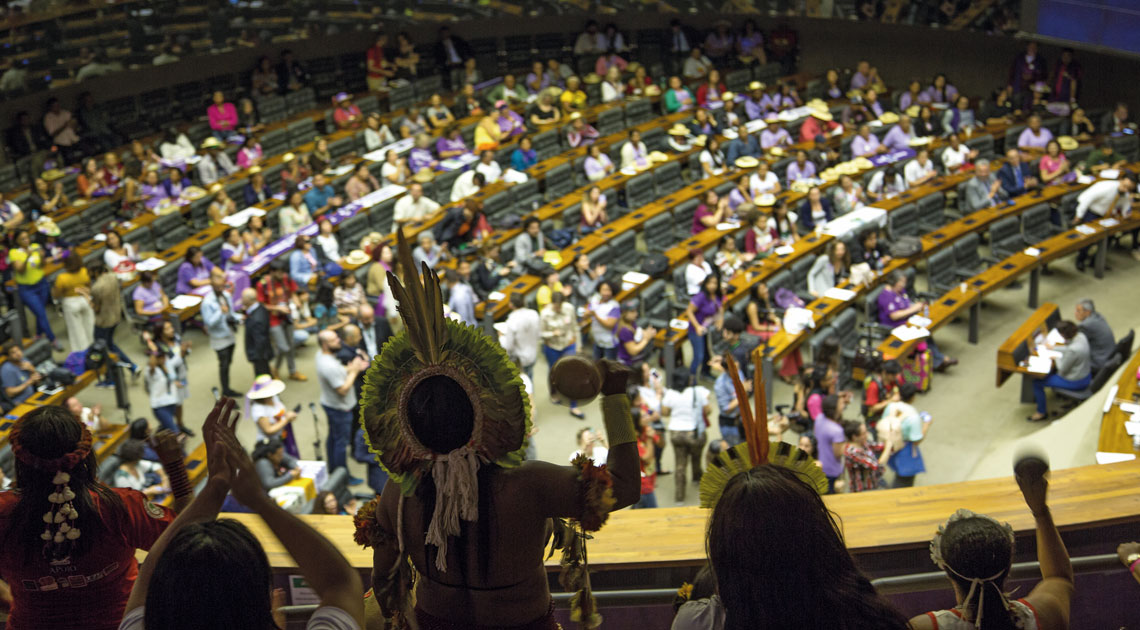
Indigenous women demand rights at a protest in Brasília, in 2019APIB comunicação
In its first mapping of the quilombola population living in Brazil, the IBGE identified 1,327,802 people who self-declared as quilombolas, or 0.65% of the total inhabitants of the country. Quilombolas are peoples that live in remaining regions of quilombos, communities that, in the past, resisted the slavery system. According to the Census, the Northeast concentrates the majority of the quilombola population, with 68.19% of the total, or 905,400 people, followed by the Southeast, which records 182,300 inhabitants, and the North, with 166,000 people. These latter two regions gather 26.24% of the Brazilian quilombola population.
The states of Bahia (29.9%) and Maranhão (20.26%) are home to the largest populations of quilombolas in the country. “In the case of the quilombola census, everything is new. We are currently in the phase of getting familiar with the data,” says anthropologist José Maurício Paiva Andion Arruti, of the University of Campinas (UNICAMP). Arruti defends that municipalities with more than half the quilombola population deserve in-depth analyses. This is the case, for example, of the city of Bonito, in Bahia, where UNICAMP is developing an extension project to offer training in quilombola education in partnership with the Federal University of Recôncavo da Bahia (UFRB). “The presence of universities and quilombola education contribute towards the strengthening of identities. This is one of the factors that may have impacted the population count and must be better investigated,” proposes the anthropologist.
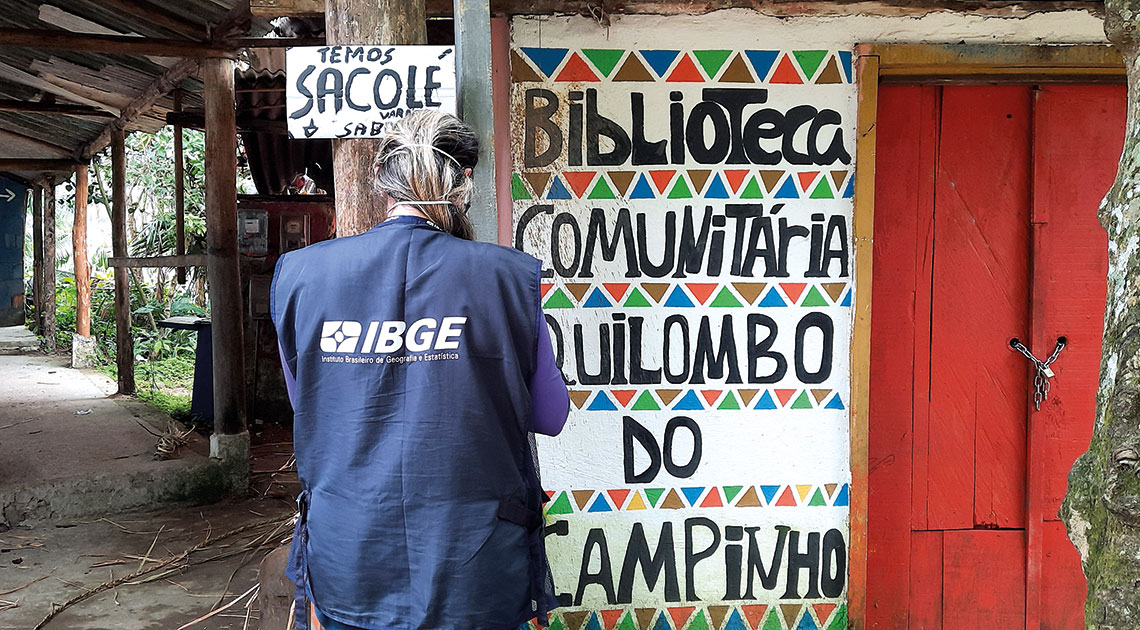
Census taker in a quilombo in Paraty, Rio de Janeiro StateIBGE collection
According to Arruti, a phenomenon similar to the one in Bonito may have occurred in Campinas in relation to the Indigenous population. In 2010, Indigenes living in the city totaled around 1,000 people and, in 2022, that number rose to 1,500, according to the IBGE. “The work of UNICAMP could be related to this advance. The adoption of the ethnic-racial quota system for undergraduate enrollment in 2017 and the Indigenous entrance exam, created in 2019, appear to have encouraged the arrival of Indigenous people and their families to the city,” he suggests. In 2017, Indigenous people enrolled at UNICAMP totaled 66, among undergraduates and graduates. In 2022, this number rose to 387.
Still with regards to the quilombolas, in the Legal Amazon, the Census identified 426,400 people, which represents 1.6% of the population from the region and almost one-third (32.1%) of the quilombolas living nationwide. The Census also mapped the existence of 494 officially demarcated quilombola territories, where 203,500 people live, of which 82.56% were quilombolas. The IBGE survey further found that only 12.60% of the quilombola population of Brazil lived in officially recognized territories in 2022. “This data calls attention to the need to demarcate and name the quilombola territories, besides suggesting the existence of a phenomenon in which people leave the communities and go to cities as a result of the lack of public policies aimed at ensuring permanence in the territories,” completes pedagogue Shirley Pimentel de Souza, a quilombola from the Pedra Negra da Extrema community in Bahia who is doing a PhD in social anthropology at UNICAMP.
Republish